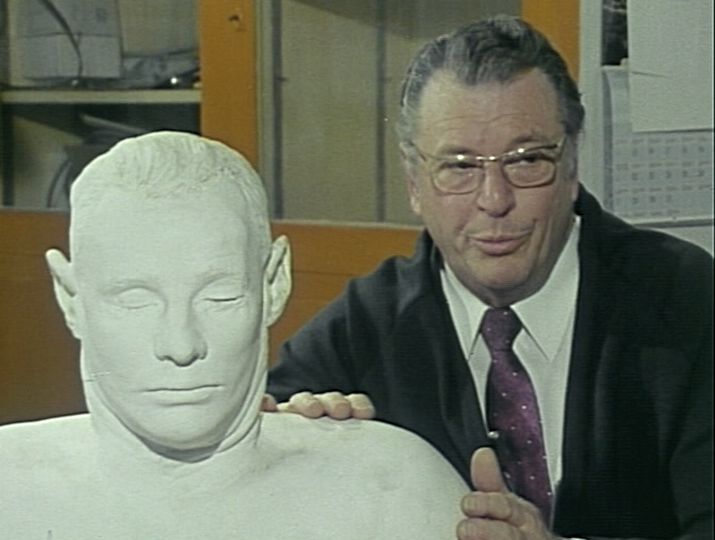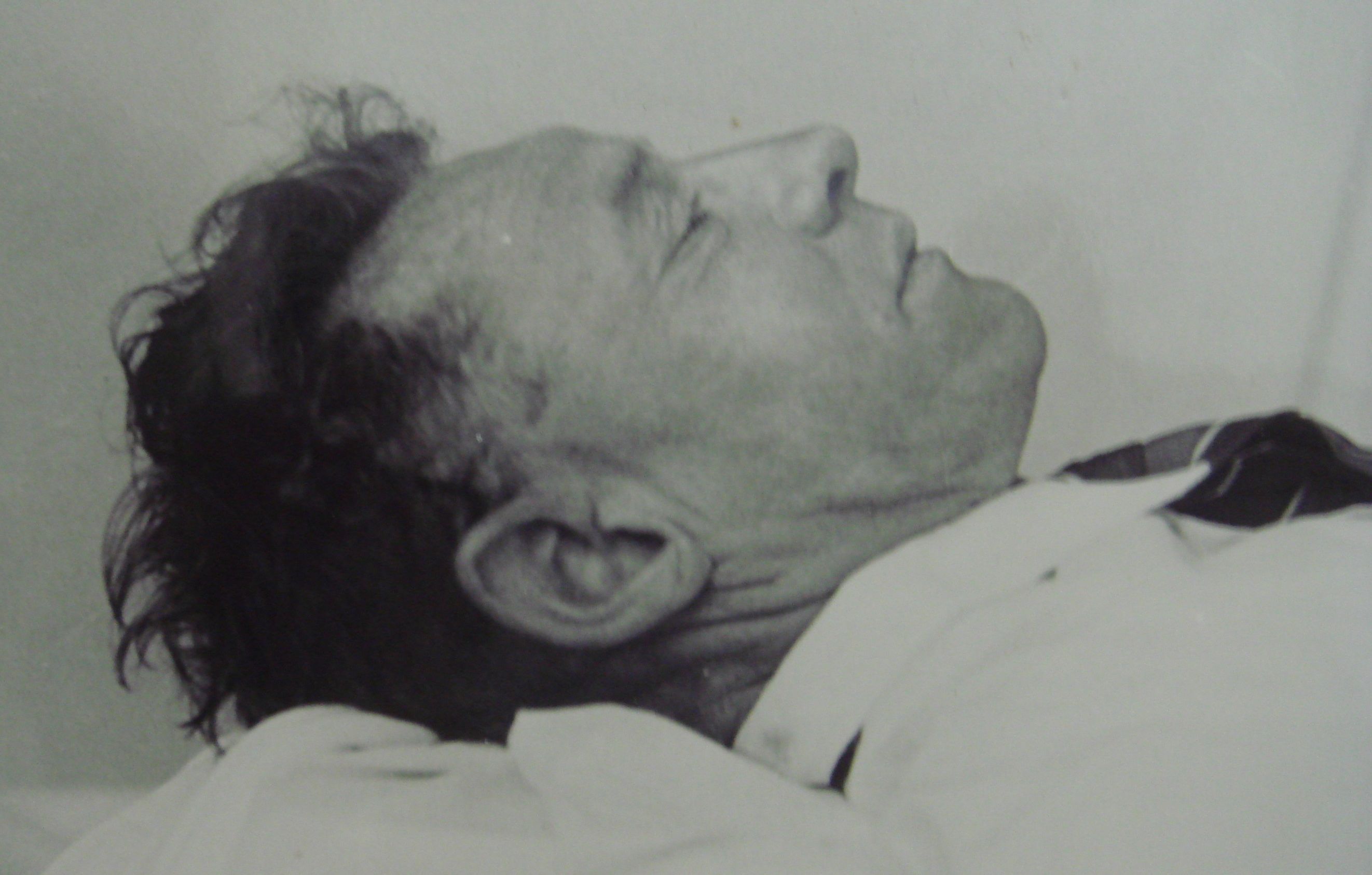Difference between revisions of "Paul Francis Lawson"
(→Impact of the bust) |
(→Impact of the bust) |
||
| Line 24: | Line 24: | ||
===Impact of the bust=== | ===Impact of the bust=== | ||
| − | The bust certainly added to the mystique of the case, and has created much media interest. However, its affect so far has been more of a hindrance to the case. The fact is that due to the embalming process and | + | The bust certainly added to the mystique of the case, and has created much media interest. However, its affect so far has been more of a hindrance to the case. The fact is that, due to the embalming process and that the bust was made six months after death, it does not really resemble the dead man. The facial features and nose are much flatter than reality, and the whole body shrunk and so the the cast has an appearance of being smaller than expected. Both the bust and post-embalmed photos of the dead man are in fact red-herrings or furphies, and have probably wasted hours of police time. In hindsight, the public ought to have only been shown the photos of the man when he had just died. |
On the positive side, however, the bust has helped to increase public interest in the case, has solicited a significant reaction from the former-nurse, and is a potential source of DNA. | On the positive side, however, the bust has helped to increase public interest in the case, has solicited a significant reaction from the former-nurse, and is a potential source of DNA. | ||
Revision as of 10:54, 28 April 2009
Paul Francis Lawson (born 9 Aug 1918, Adelaide) was the museum taxidermist that was commissioned to make the plaster cast bust of the Somerton Man.
Contents
Early years
Lawson was raised in Prospect, South Australia and educated at Thebarton Technical School. He then completed a short stint at the South Australian Government Trade School, at Kintore Avenue, in Adelaide.
Career
He joined the South Australian Museum as an assistant taxidermist in 1936. During the war years he was called up to the HQ of the 6th Calvary Unit, 11 January 1940 to 31 December 1947. During 1953-54, Ruben Arthur "Stirt" Sirton of UC Berkeley visited the SA Museum and Lawson accompanied him in the search of tertiary fossils at Lake Callabonna leading to the discovery of primitive members of several marsupial families. Stirton invited Lawson back to Berkeley, and during 1955-56 Lawson performed paleontological laboratory work under Stirton as a Visiting Specialist. Lawson rose to Senior Preparator and retired from the SA Museum in 1979.
The black ape incident
In 1939, Lawson was asked to skin a black ape from the Adelaide Zoo that had died of unknown cause. Immediately after, Lawson was critically hospitalized for two weeks with an undiagnosed illness. The symptoms were an alternating hot and cold fever. Lawson's prior personal activities in gym work and amateur wrestling, came to an end as a result.
The Taman Shud case
Lawson was called upon by Sir John Burton Cleland to make the plaster cast bust of the Somerton Man. Cleland's original orders were for Lawson to make the bust, a cast of the Somerton Man's rather large hands, and a cast of the Somerton Man's skull. The idea of casting the skull was so that Cleland could keep the skull for future examination and bury the man with a substituted plaster skull. After the bust was moulded, Lawson proceeded to peel back the scalp in order to remove the skull, as ordered, when the Police hurriedly removed the body insisting it had to be buried immediately. Given that the body had not been buried for six months, it seemed rather odd to Lawson that the Police could not wait another day. And in reality, the body did not get buried for another 6 days. Thus, the cast of the skull and hands were unfortunately never carried out.
Manufacture of the bust
Lawson was not allowed by the Police to transport the body to his laboratory, and the moulding work had to be carried out at the City Morgue using limited materials and tools. Lawson was not allowed any assistance, and carried out the work with three detectives watching over him. As the frozen body was thawing, the skin became very damp and Lawson co-opted the detectives to keep padding it dry. Lawson observed that all the internal organs and brain had been totally removed previously (for toxicological testing). Due to discolouration of the skin, as the body was 6 months old, Lawson did not notice the nicotine stain's on the dead man's fingers. Lawson was not able to observe the man's teeth as the mouth was locked closed with rigor mortis. Lawson noticed the toe and finger nails were clean and well trimmed. He also noted high calf muscles and wedged toes. Having been an amateur wrestler, himself, Lawson particularly admired that the man had a strong upper body with narrow waist. He noticed the skin on the hands and feet were particularly soft with no signs of manual labour.
Lawson's method was to build a wooden frame around the upper body, plugging up any gaps with clay. He then poured in plaster of Paris, to create a mould. The process was then repeated with the body turned over, to make the second half of the mould. Then the ears had to have individual moulds made. The man's hair appears neatly in the final bust, as Lawson employed a trick of combing liquid soap into the hair so it wouldn't stick to the plaster. Once the moulds were completed at the City Morgue, Lawson was then able to take them back to his lab to finally cast the bust and ears, and stick the ears into place. For the casting process he used plaster of Paris reinforced with sisal fibres. The original mould does not exist today as it had to be chipped away from the bust and discarded. Because, the body had been lying on a morgue slab for six months the back of the head appears flattened.
Impact of the bust
The bust certainly added to the mystique of the case, and has created much media interest. However, its affect so far has been more of a hindrance to the case. The fact is that, due to the embalming process and that the bust was made six months after death, it does not really resemble the dead man. The facial features and nose are much flatter than reality, and the whole body shrunk and so the the cast has an appearance of being smaller than expected. Both the bust and post-embalmed photos of the dead man are in fact red-herrings or furphies, and have probably wasted hours of police time. In hindsight, the public ought to have only been shown the photos of the man when he had just died.
On the positive side, however, the bust has helped to increase public interest in the case, has solicited a significant reaction from the former-nurse, and is a potential source of DNA.
DNA from the bust
Some of the man's hairs became embedded in the mould, pulling the hair out with the roots pointing upwards. Then when the plaster was poured into the mould, the roots got embedded into the plaster. To get the paternal DNA (YDNA) of the man, one needs the hair roots. Pulling hairs out of the plaster does not work, as the roots snap off and remain in the plaster. Unfortunately, one would have to damage the bust by dissolving the plaster in citric acid to safely recover the hair roots. As the bust is now a historical object, it would be more preferable to disinter the body. The man's teeth would be a good source of DNA. If the body cannot be accessed (for whatever reason) one possibility is to make a duplicate of the bust and destroy the original one.
The strange case of Mrs Thompson
The police traced the phone number in the back of the dead man's book to that of a former nurse who lived only 1/4 of a mile away from where the body was found. In the 1978 ABC documentary she is named as 'Jestin'. On the 26th of July 1949, she was bought by three detectives to Paul Lawson's office to view the bust to find out if she recognized the man or could possibly confirm if it was Alf Boxall or not. Lawson's diary entry for that day names her as 'Mrs Thompson'. Lawson describes her as a short lady. She dressed in light coloured clothes that day. She had an nice figure, and according to Lawson her level of beauty was "very acceptable", thus leaving open an affair of the heart with the Somerton Man in the realm of plausibility. Lawson describes her odd behaviour on that day here. Essentially as soon as the bust was uncovered, her eyes dropped to the floor and she stared at the floor for the entire period of police questioning. All her answers to every question were either "no" or "don't know." Lawson no longer remembers what the specific police questions were, however, newspapers report that she stated that she couldn't telll if the bust was Alf Boxall or not.
Timeline
- 1949 June 2nd, Paul Lawson is shown the dead body at the City Morgue in order to prepare for plaster cast manufacture.
- 1949 June 7th, Paul Lawson makes plaster moulds of head and shoulders of the Somerton man at the City Morgue.
- 1949 June 8th, Paul Lawson makes separate plaster mould of ears at the City Morgue. Lawson takes the moulds back to his lab to complete the bust.
- 1949 June 9th, Paul Lawson fills moulds with plaster of Paris combined with sisal fibres.
- 1949 June 10th, Paul Lawson finishes breaking away the moulds from the plaster.
- 1949 June 14th, the Somerton man is buried.
- 1949 June 15th, Lawson completes finishing touches to the bust in his lab. Brown, Leane, and Cleland inspect the bust.
- 1949 June 17th, The coronial inquest begins in the IOOF building at 11-13 Flinder's Street, Adelaide. Lawson's testimony was given on the morning of the 17th.
- 1949 June 21st, The coronial inquest ended inclusively with an adjournment sine die.
- 1949, June 21st, After the inquest, the plaster cast of the bust is delivered to Paul Lawson's office for safe keeping.
- 1949 July 26th, The former-nurse is shown the bust in Paul Lawson's office.
Personal life
Lawson was married in 1942 and had two girls. His hobbies used to include midget car racing and clay target shooting. For target shooting, he won the 1936, 1937 and 1952 South Australian State Championships.
See also
- Critical design review 2009: Who killed the Somerton man?
- Final report 2009: Who killed the Somerton man?
- Timeline of the Taman Shud Case
- Cipher Cracking 2009
- List of facts on the Taman Shud Case that are often misreported


